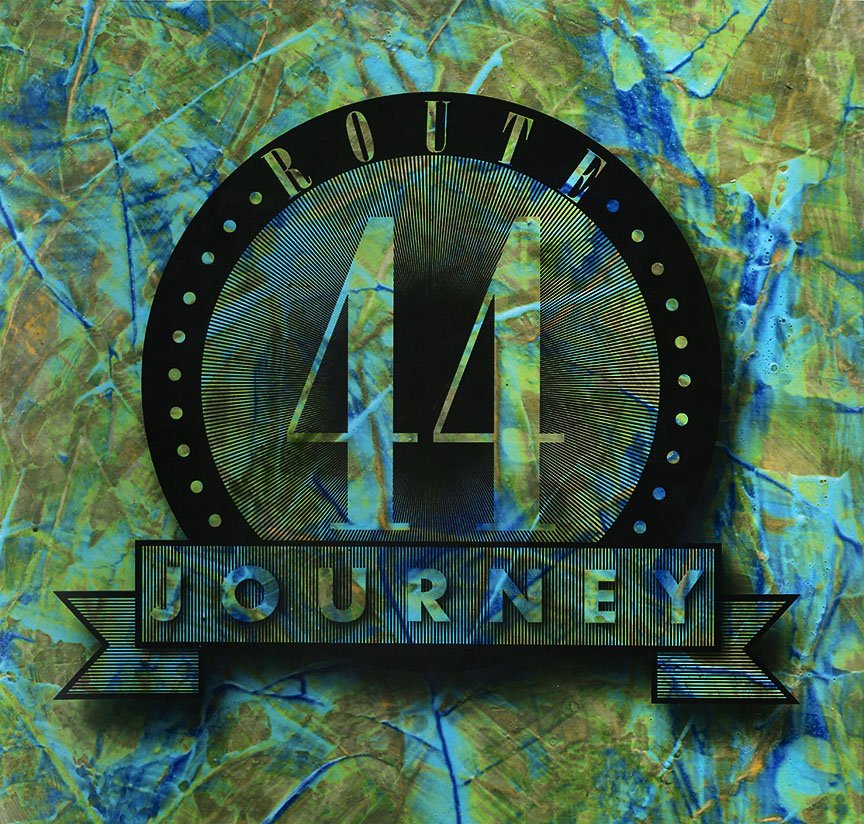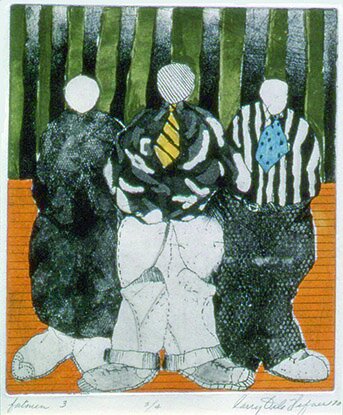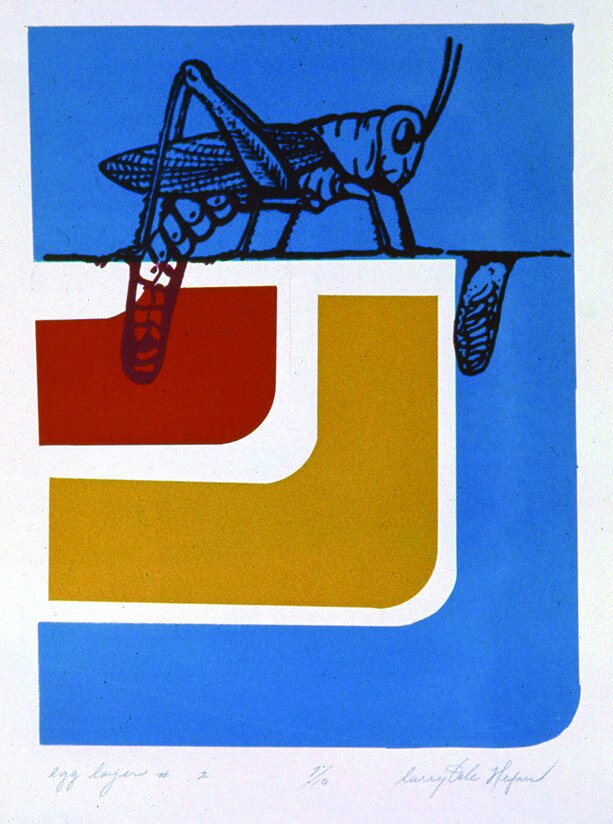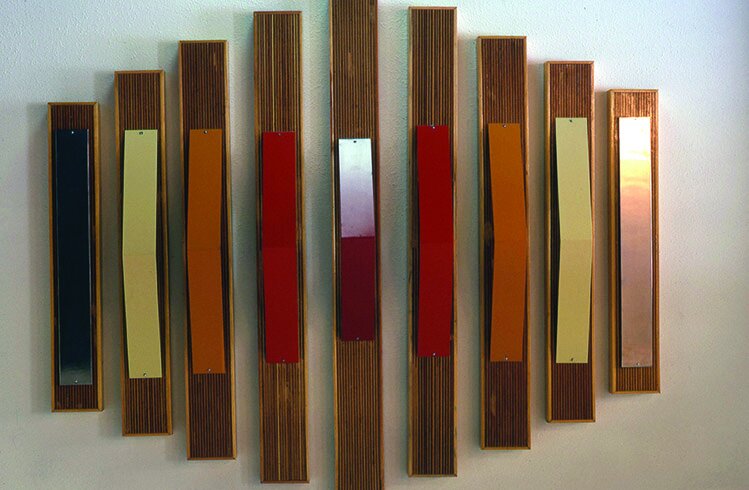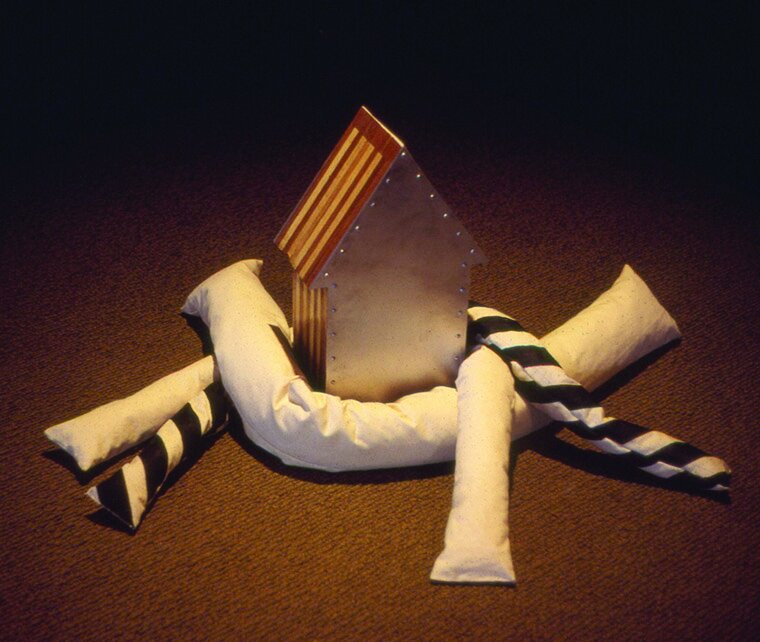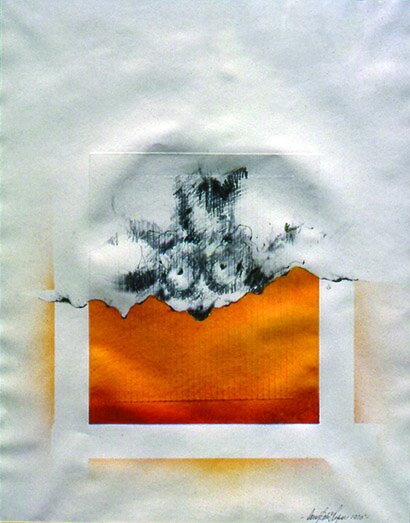Route 44 - A Journey, Chapter 2
Retrospective Book Cover Design
Chapter 2
I am back at OU but things are a lot different now. There are two big differences this time, one, I am not alone, I have a partner. and two I have a more open mind about what Art is. I came back thinking maybe I should listen and pay attention to what my professors were trying tell me. You know, I was now 20 and out of my teens so I didn’t know everything like I did at 19. Isn’t it funny how much your intellect deteriorates as you age; I am now 64 and know absolutely nothing. I enrolled in a full load of art classes including my first printmaking class. It was an etching (intaglio) class taught by John Hadley. He was another young professor who had a huge impact on my development. I had John previously for a drawing class and would eventually have him for several classes including painting and advanced drawing. Unlike Jack, he was not my buddy, best friend or encourager, he basically came in class everyday and figured out a new way to tell me I sucked. I could never please him. I guess I was a bit of an over achiever and this really frustrated me. After teaching for over 30 years, I now know, this was his unique way of motivating students. It worked on me, the more he would rag me about my work, the harder I would work. I was determined to show him! I really enjoyed the technical aspects of printmaking. I just liked the process. It was hard work but there was no other way to achieve the look of hand inked and printed plates. I later took lithography and screen printing and enjoyed all of them. Each had its unique qualities. I enjoyed the printmaking process so much that I eventually changed my major from painting to printmaking. I never stopped painting, but I did share time with printmaking during my undergraduate studies. I think because there was more emphasis on drawing at that time in printmaking, I started doing more drawing, but the drawing I was doing was really more like painting. I know, very confusing, but OU at that time was very liberal in its approach to Art. They really didn’t like labels so all the classes seemed to merge together. Many would argue that this lack of structure didn’t give the students enough preparation in the fundamentals but it seemed to work for me. These drawings that I was doing were big. OU’s philosophy was very avant-garde; they really pushed you into large-scale work. This is something that has stuck with me. Even when I was forced to work smaller because of lack of space or because of limitations created by a technique, I always felt like my work would have more impact if it were larger. The smaller work always feels like sketches or color studies. Another thing that OU encouraged was the exploration of non-traditional materials. In an effort to go bigger with these drawings I started looking for larger paper. This led me to commercial offset printing paper. Not only was this paper larger, it was much cheaper. This was definitely a positive thing for a student with almost no income. In addition to paper, I was looking for materials to draw with; this led me to aerosol spray paint.
“Kissing Stars” – graphite & airbrush, influenced by John Hadley
“Stars & Stripes” – graphite & airbrush, influenced by John Hadley
Spray paint was being used in other parts of the country but mostly for graffiti, which had a very negative connotation publicly and generally in the art world. These drawings were mostly ebony pencil and spray paint. They were big, bold and beautiful. . .but definitely not “pretty pictures.” Unfortunately, none of these survived but I do have a few examples of smaller combination drawings where I used printmaking techniques and the airbrush to achieve a similar look and style. These examples are not as bold as the larger works but they are important because they introduced me to the airbrush.
I continued to paint the more traditional still lifes and landscapes in watercolor and acrylic but now they held a different purpose in my Art. Remember, I mentioned earlier that I had established a relationship with a small gallery in Norman. Well, I continued to paint for profit. This gave me a little extra income, which we desperately needed. When we first moved to Oklahoma City, Jo had a secretary job in Oklahoma City and I commuted to Norman for school. After the first few months I realized that it was very difficult for me because I needed more time at night in the classroom/studio to complete my work. So, after talking it over with Jo, she agreed to move to Norman and she would make the commute. Did I mention how lucky I was with all aspects of love number one? Finding an apartment in Norman or any college town is usually not a difficult task. We quickly found one at one of the larger complexes, packed up our stuff and made the move.
Early prints and drawings influenced by John Hadley
“Fat Men 3” – etching
“Egg Layer” – silk screen
“Yesterday” – silk screen
“Inner Conflict” – etching
“Out Of The Blue Of The Western Sky” – etching
“Egg Layer 2” – silk screen
This move proved to be very beneficial for me. It allowed me more time to develop my Art skills and concentrate on class projects. At this time my classes were a broad mix of beginning and intermediate Art classes, including beginning classes in 3-D design. I had a young grad assistant named David Holsonback for this foundations course. He was young and energetic and influenced me greatly in the exploration of this new and exciting form of expression. Another strong influence at that time was a professor by the name of James Flury. He was new to OU and had a show of his sculptural work in the museum during the fall semester of ‘69. The exhibit consisted of glass two-way mirror boxes with multi-colored neon inside. The bent neon tubing illuminated the inside of the boxes and the mirrors repeated the shapes infinitely. This exhibit was amazing; I had never seen anything like it before. I immediately started trying to incorporate his ideas into my 3-D Design projects. The final project was a free project that allowed me to use some of these materials. I created some egg-like shapes from wood on the lathe in the wood shop, assembled them together with dowels and glue. I then painted them flat white. I found a small electric motor at a thrift shop that rotated a shaft at a slow speed. I built a shallow box with a small hole in the top to hide the motor and allow the shaft to go through. I attached the painted wood sculpture to the shaft so it would rotate. I covered the entire structure with a ¼ inch smoked glass cube. This piece was the most successful of the two or three pieces of sculpture that I did and eventually won a purchase award. I enjoyed working 3-dimensionally and these instructors had an impact on my thought process and me, but painting was really where my heart was.
Early three dimensional projects influenced by David Holsonback and James Flury
“Organic Movement” – glass & wood
“Thanks to Jim” – wood & steel
“Arrow & Soft Forms” – metal, wood & canvas
My major at this time was Advertising Design and it seemed to me my Ad Design classes were my weakest. Ironically, I would eventually end up making my living in Graphic and Advertising Design; spending more than 35 years of my career as a professional designer. It seemed that on every project I would have what I thought was a brilliant idea that involved a massive amount of time, work and process to complete and when we presented our finished work, some of my fellow students would have a better solution that was simple and direct. I now know, I was putting all the emphasis on the process instead of the concept. I was still trying to make “pretty pictures” rather than solve the problem. I was what I now tell my students “a graphic decorator rather than a graphic designer.” By the time I was a senior, I had decided to pursue graduate school, so I changed my major to printmaking, which at that time was called Graphics at OU. I had enough hours to declare my major in Advertising Design, Painting or Printmaking, but I had a 4.0 overall GPA in Printmaking. I thought this would enhance my ability to find a good grad school. If painting was where my heart was, printmaking was where my effort and work ethic was. The technical skill level to master intaglio, lithography and screen-printing took a huge amount of time and work. It did eventually pay off, not in a graduate school but with my first teaching job. After graduating with my MFA in Painting, I got a job in North Carolina as a printmaking instructor.
“3 Fingered Star Puffer” – graphite & airbrush
“Climax” – graphite & airbrush
“UIntitled” – airbrush & embossing
“Visual Social Statement” – ink, graphite & embossing

